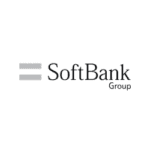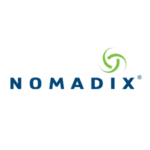 With operating budgets thrown out the window by second quarter this year, hoteliers are scrambling to find useful historical data to help guide them through the 2021 budgeting and forecasting process. Operators are advised to rely on historical drivers rather than bottom line revenues to help them better plan for the days ahead. Knowing how to analyze trend data, such as driver value, will help operators forecast more accurately.
With operating budgets thrown out the window by second quarter this year, hoteliers are scrambling to find useful historical data to help guide them through the 2021 budgeting and forecasting process. Operators are advised to rely on historical drivers rather than bottom line revenues to help them better plan for the days ahead. Knowing how to analyze trend data, such as driver value, will help operators forecast more accurately.
Due to the pandemic, budgeting season has started early this year, but occupancy and revenues in some circumstances are non-existent. So, what can hoteliers do now to have better, more accurate budgeting numbers for 2021? In these uncertain times, analyzing every single cost matters. People need to know what to track and what they are spending ‘per occupied room’ and how those costs are impacting the ‘percentage of revenue.’ It’s not an easy task, unless you have the financial-planning tools needed to streamline the process.
Here are six tips to assist with 2021 budget planning:
1. Use driver-based calculations rather than straight input.
Due to the relationship of the driver to its source, when a modification to the source is made, the calculation will cascade and update the associated values throughout the budget. When you are using straight input for each line of the budget, when a value is changed, the entire budget will need to be reviewed and possibly redone. If the driver value for reservation expense is 5% of Room Revenue, when the Room Revenue value is changed, the reservation expense will be adjusted.
2. Develop standards – such as Hours/Occupied Room.
Understand what the correct ratio should be. If a housekeeper should be .5 hours/Occupied Room for a select service property, this can become the “standard” or guideline for other select service properties within your portfolio. Compare those “standards” to generate the most accurate value as to how the amount should be calculated. For instance, if one property is spending .75 hours/occupied room and another is spending .25 it would make sense that the standard value should be .50 hours/occupied room. The budget calculation will not vary by the time but by the number of rooms that are occupied. This will also aid with the amount of labor needed to meet those standards.
3. Use operational factors to help determine the budget value.
As in the example above, the property using .25 hours/occupied room has an average guest satisfaction score of a 4, .5 hours/occupied room will then justify the increased time needed, to obtain a higher guest satisfaction score; whereas the property with .75 hours may always score a 10 on their guest satisfaction for cleanliness. Now considering that less hours being budgeted/occupied room may decrease the guest satisfaction score. Weather is also a valuable operational factor that can aid in budgeting. For instance, a resort in the mountains predicting a very warm winter might consider a lesser number of occupied rooms, due to less cold weather guests.
4. Don’t overcomplicate the process, what driver is the most beneficial in determining the result?
Define the typical driver, be realistic rather than creating several different drivers for every account. Too many choices cause confusion and overwhelm the users with the budget process. Focus on the data that counts, specifically on the operational values that drive a specific budget line.
5. Review the monthly trends of your actual data.
As we are now 9 months into an unpredictable year; review your data looking for a trend. If the linen expense in one of your F&B outlets is running 5% of dinner revenue for the first 3 months and then increases to 8% for the next three months and then returns to 5%; use those same historical trends to define your upcoming year rather than taking the annual amount and dividing it by 12 giving you the same flat amount for each month. This will help especially with seasonal properties and improve overall month to month accuracy.
6. Develop a budget that will create a solid beginning for your 2021 forecast.
Often it is said that the budget is outdated once it is approved, so users do not spend the time on the month-to-month accuracy. If the time is spent on creating the most accurate monthly budget, this can then be used as a valuable starting point for your future forecast and your budget effort is proven to be worthwhile.
Financial-planning today is not a business-as-usual process. Given recent events, crafting the perfect budget may not be achievable; but using hospitality-specific drivers that reflect today’s Covid-19 world and the future changes it brings can assist in delivering more accurate forecasting, resulting in one version of the truth throughout an organization.
About the author
Jill Wilder, is the vice president of Aptech Computer Systems, Inc., based in Pittsburgh, Pennsylvania. Aptech provides a fully integrated enterprise accounting, business intelligence and planning ecosystem to the hospitality industry. Its solutions help customers at both the corporate and property levels understand their financial and operational data for faster goal achievement.
The company is renowned for introducing business intelligence into the hotel industry and offers a solid resource of hospitality professionals. Aptech is an IBM Software Value Plus partner and Premier Solution Provider, as well as a Prophix Premier Business Partner. Incorporated in 1970, Aptech’s state-of-the-art back office, true business intelligence and enterprise planning solutions are 100% hotel specific. Solutions include PVNG, Execuvue® and Targetvue. Clients comprise over 3,500 properties – including large chains, multiple-property management companies and single-site hotels. Execuvue is registered to Aptech Computer Systems Inc. All other trademarks are owned by their respective holders. For more information please visit www.aptech-inc.com.


















